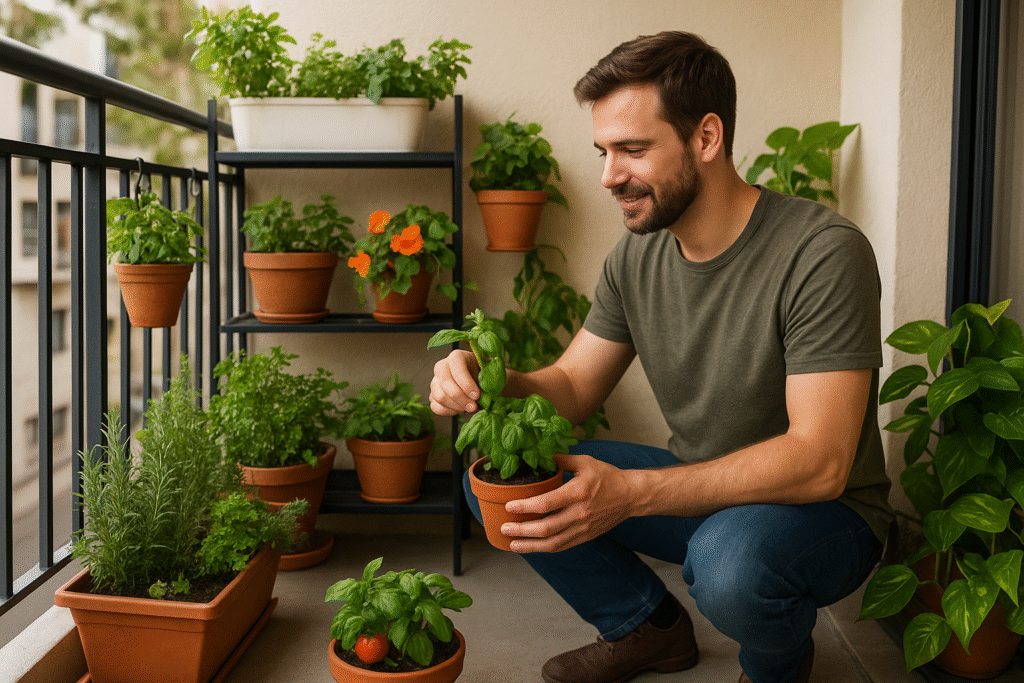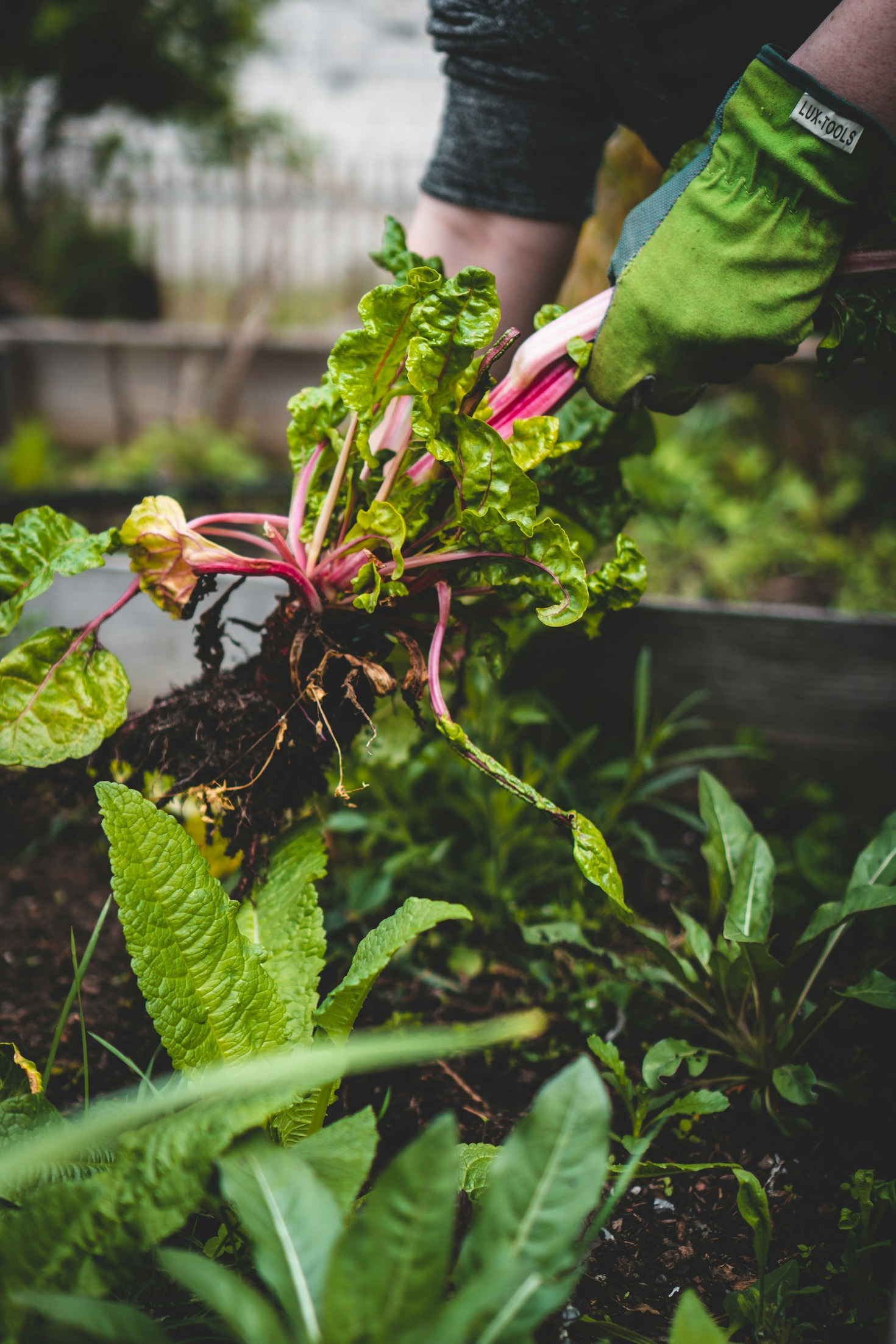Your cart is currently empty!
When Jordan first stepped onto the balcony of his new apartment, he felt equal parts excitement and doubt. It was small, seven feet long, four feet deep, a concrete shelf hanging above a busy street. Hardly the lush oasis he had imagined. But Jordan had always believed that growth starts with intention, not space.
This is the story of how he transformed that modest balcony into a thriving sanctuary, and in the process discovered how to design a balcony garden that thrives, no matter the size.
Chapter 1: The Balcony That Wanted to Grow
Jordan’s balcony had potential. He could feel it. The afternoon sun warmed the railing, and a gentle cross-breeze carried scents of city life mixed with faint hints of possibility.
He grabbed a notebook and wrote three words:
Light. Space. Purpose.
These would become the pillars of his balcony garden design.
Most people jump into buying plants, but Jordan understood that a garden, even a small one, starts with observation. For a week, he documented how sunlight moved across the balcony. Morning shadows. Midday brightness. The golden-hour glow.
When he realized his balcony got five and a half good hours of sun, he smiled. “That’s enough,” he whispered. “More than enough.”
Chapter 2: Designing with Intention
Before choosing a single plant, Jordan sketched the balcony. He mapped out where vertical planters could go, where containers would fit, and how to keep living space open.
He created zones:
- The Light Zone: where sun-loving plants would bask
- The Shade Zone: reserved for ferns, lettuces, and cool-loving greens
- The Comfort Zone: a small chair, a tiny table, and a place to breathe
This was his first lesson in how to design a balcony garden that thrives:
A thriving garden begins with flow, a layout that respects both plants and people.
Chapter 3: Choosing the Right Plants (The Balcony’s Voice)
Plants aren’t decorations. They’re roommates. Jordan wanted plants that would belong on his balcony, not struggle to survive there.
So he chose wisely:
- Basil, thyme, and rosemary for their resilience
- Cherry tomatoes to climb the railing
- Nasturtiums to spill color over the edge
- Dwarf peppers for a pop of vibrancy
- Ferns and lettuce for the cooler corners
- A trailing pothos for softness
His balcony was small, but his selection was intentional, and intention is everything in balcony garden design.
He matched plants to light conditions, container sizes, and airflow. He even placed mint in its own pot because he’d learned the hard way how aggressively it spreads.
Chapter 4: Growing Upward, Not Outward
Space was tight. Containers clustered quickly. So Jordan went vertical.
He installed a three-tier shelf against the side wall. Hanging baskets dangled from the overhead beam. A magnetic railing planter hugged the edge of the balcony.
Each plant had a place. Each inch had a purpose.
The city may have stretched upward around him, but now his garden did too. This vertical expansion became the signature of his thriving balcony garden.
Chapter 5: Water, Wind, and the Rhythm of Care
Jordan learned the balcony’s rhythms, when the wind was strong, when the soil dried quickly, when the sun scorched a little too harshly. He adapted.
He mulched his pots with dried leaves to retain moisture.
He added a small self-watering system using upcycled glass bottles.
He grouped plants with similar needs together, a trick he called “microclimates.”
These small choices created a balanced ecosystem. He didn’t want a balcony garden that just survived; he wanted one that thrived with minimal waste.
This was the heart of how to design a balcony garden that thrives:
Care isn’t constant effort, it’s thoughtful efficiency.
Chapter 6: The First Bloom
Weeks passed. Then one morning Jordan opened the sliding door and froze.
A cherry tomato plant he’d nearly given up on had unfurled a tiny yellow blossom. Just one, but it glowed like a promise.
Then came more blossoms, more leaves, more bursts of life. Nasturtiums cascaded down the railing like orange waterfalls. Herbs filled the air with fragrance. Even the ferns in the shade corner danced softly in the breeze.
Jordan didn’t just have plants.
He had a garden, a living, layered, thriving space.
And all of it grew from intention, observation, and patience.
Chapter 7: The Lesson the Balcony Taught Him
One evening, as the sun dipped behind the skyline, Jordan sat with a cup of tea in his little Comfort Zone. He looked around and realized something quietly profound:
His balcony hadn’t changed.
He had.
He had learned to work with the space he had.
To listen to what it needed.
To design with both function and heart.
And that, he understood now, was the secret to how to design a balcony garden that thrives, not just in the literal sense, but in the human sense.

Final Thought
Jordan’s story proves something simple but powerful:
A thriving balcony garden isn’t about having the perfect space, it’s about designing with purpose, creativity, and care.


Leave a Reply